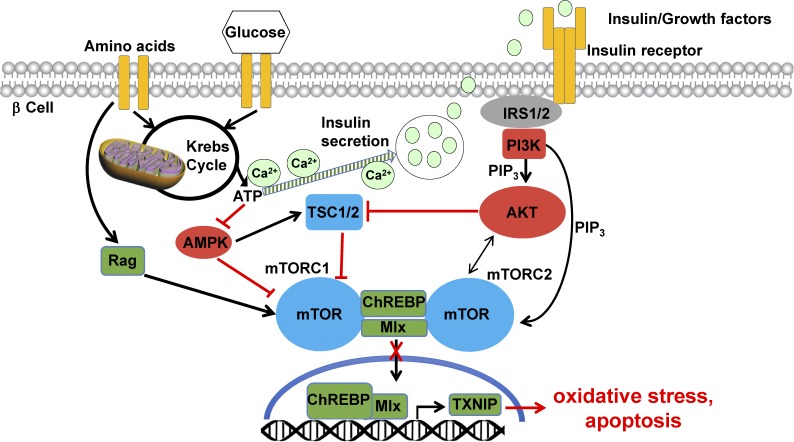Figure 1.
mTOR is the essential signaling pathway for nutrient sensing and apoptosis protection in the β cell. Nutrients such as amino acids and glucose activate both mTOR complexes in the β cell via interconnected pathways. mTORC1 is activated directly, whereas secreted insulin (induced by glucose metabolism and the raise in intracellular Ca2+) acts indirectly through mTORC2. mTORC1 is activated through Rag GTPase and inhibited by TSC1/2 and AMPK (elevated ATP/AMP derived from the Krebs cycle and mitochondrial respiration suppress AMPK). mTORC2 is activated by growth factors and insulin through the insulin receptor IRS1/2–PI3K–PIP3 pathway and is required for full activation of prosurvival kinase AKT. Under physiological conditions, mTOR binds to the ChREBP–Mlx complex and keeps it in the cytosol. mTOR can also dissociate the ChREBP–Mlx complex or prevent their interaction. In both scenarios, mTOR prevents the ChREBP–Mlx shuttling to the nucleus and binding to the TXNIP promoter. Subsequently, TXNIP transcription and β cell apoptosis are suppressed. In the absence of mTOR, the ChREBP–Mlx complex binds to the TXNIP promoter, which leads to elevated TXNIP levels, oxidative stress, and apoptosis.

